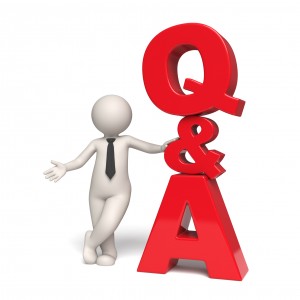Here’s the latest reader question, along with my reply!
Joshua asks: In case you don’t remember, I asked two questions recently about finding a car. Well, I found a car that I was very happy about. It is a manual transmission, 1996 Toyota 4Runner with the SR5 trim. And in case you are wondering, it gets modestly good gas mileage between 19-21, depending on what traffic I am driving through. Oh I forgot to mention, I got it for $3,100 with 251,000 miles on it. I have thus far put on 4k and the only initial problem was the catalytic converter went out, which I don’t actually need which is why I haven’t gotten it repaired yet. Except for one thing, my car seems to be making a weird noise now and I got it checked out by our friendly, local mechanic. They checked everything they could think of but couldn’t find anything. They also drove it around and couldn’t understand the problem. The only they could think of was it could be whatever controls the rear-wheel drive. When I next drove my car, I shifted it into 4wheel drive and noticed that the sound immediately stopped. Which is why I think that the mechanic is right. Have you ever heard of or experienced a problem like this?
My reply: Your truck, like all 4WD trucks (and 4WD SUVs) is default rear-drive. Meaning that unless the 4WD is engaged, all the engine’s power always goes to the rear wheels. They are the primary drive wheels. When 4WD is engaged, the power is generally split, 50-50 front-to-rear. But the rear wheels are always powered while the front wheels are sometimes powered.
There is no “control” for the RWD, as such.
Some trucks have a feature which allows the rear axle to be mechanically disengaged for towing and so on but otherwise, the main “control” in a 4WD system is the one which controls the 4WD. That is, the system – whether automatic or manual (e.g., either a knob you turn/lever you shift/hubs you manually rotate) which engages and disengages the 4WD.
I strongly suspect the noise is coming from partially/fully engaged hubs. Or a problem with your hubs.
If you have manual locking hubs – you have to manually get out, go to each front wheel and manually turn the knob in the center of each wheel hub to engage the 4WD – be aware the vehicle may still be in 4WD if the hubs are still in the “locked” position – even if you shifted into 4H. Conversely, if you have manual hubs and don’t get out and lock them, shifting into 4H won’t engage 4WD; the light may come on indicating 4H but you will still be in 2WD, that is, rear-wheel-drive.
If your truck has auto-locking hubs, the problem could be with the system which engages them.
That’s where I’d start my checking… hope this helps!
. . .
Got a question about cars – or anything else? Click on the “ask Eric” link and send ’em in!
If you like what you’ve found here, please consider supporting EPautos.
We depend on you to keep the wheels turning!
Our donate button is here.
If you prefer not to use PayPal, our mailing address is:
EPautos
721 Hummingbird Lane SE
Copper Hill, VA 24079
PS: EPautos magnets are free to those who send in $20 or more. My latest eBook is also available for your favorite price – free! Click here. If you find it useful, consider contributing a couple of bucks! 












What kinds of sound is it? Does it vary with speed? Is it something like a light chattering? It could very well be front locking lugs not fully disengaging due to being dry.